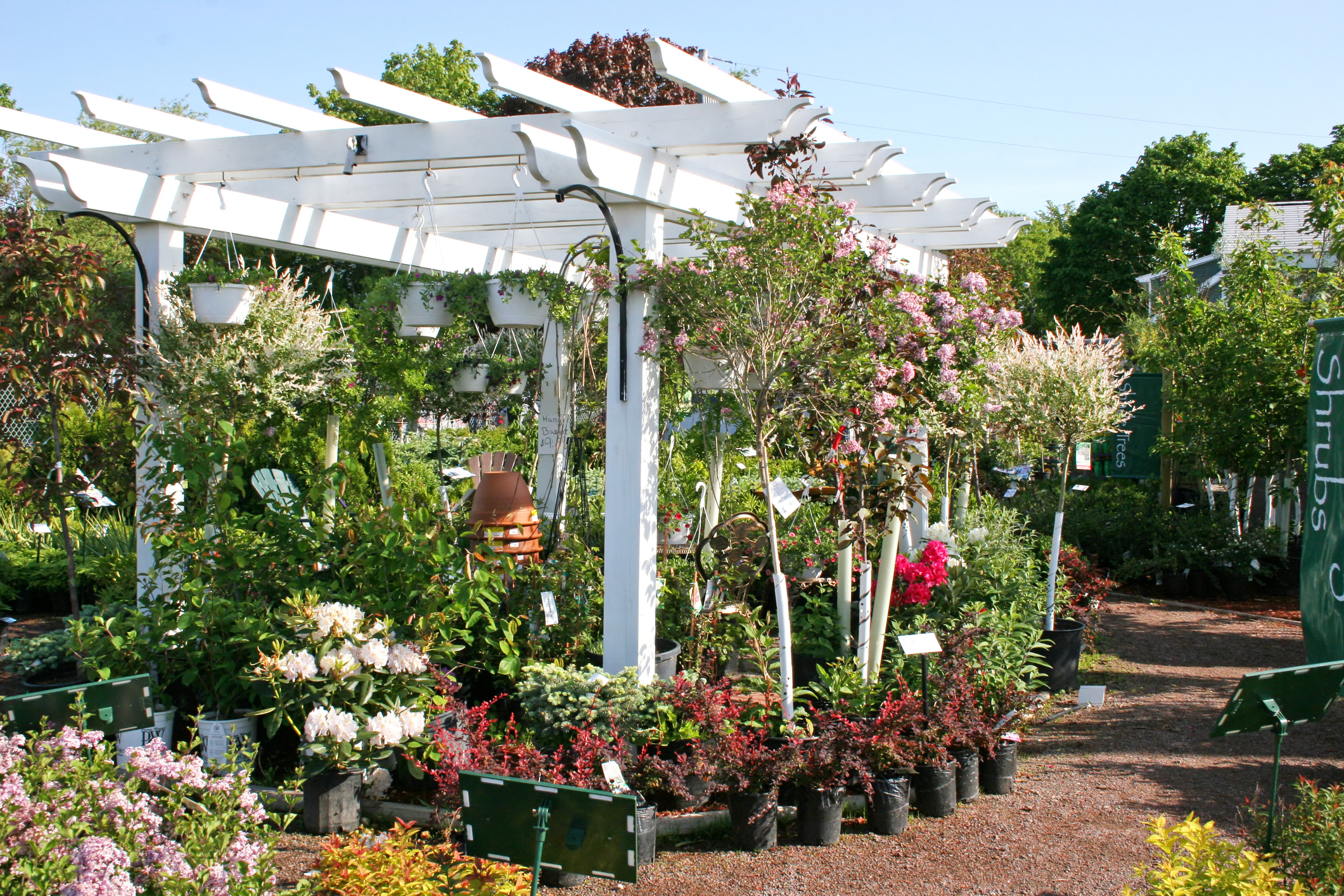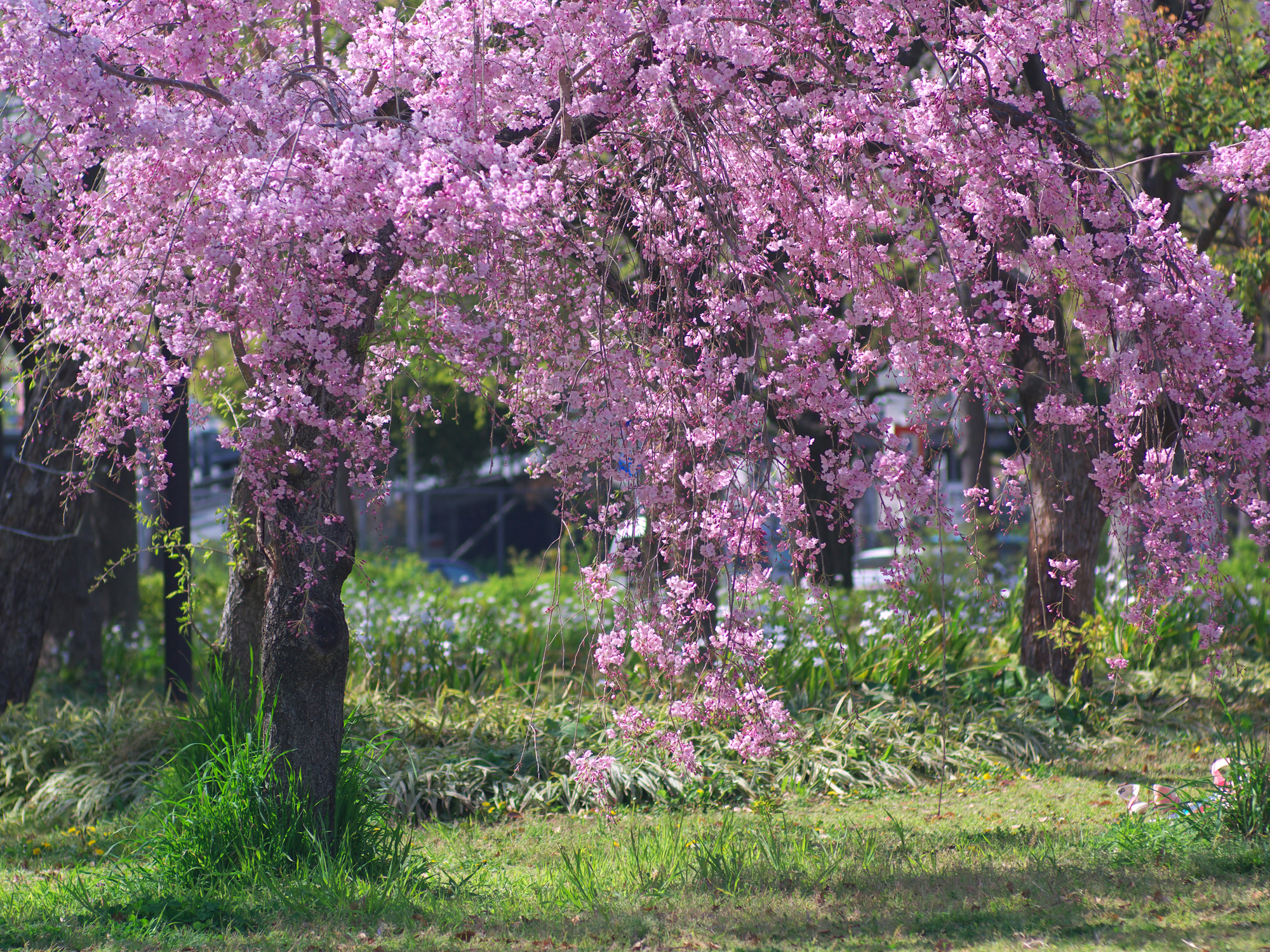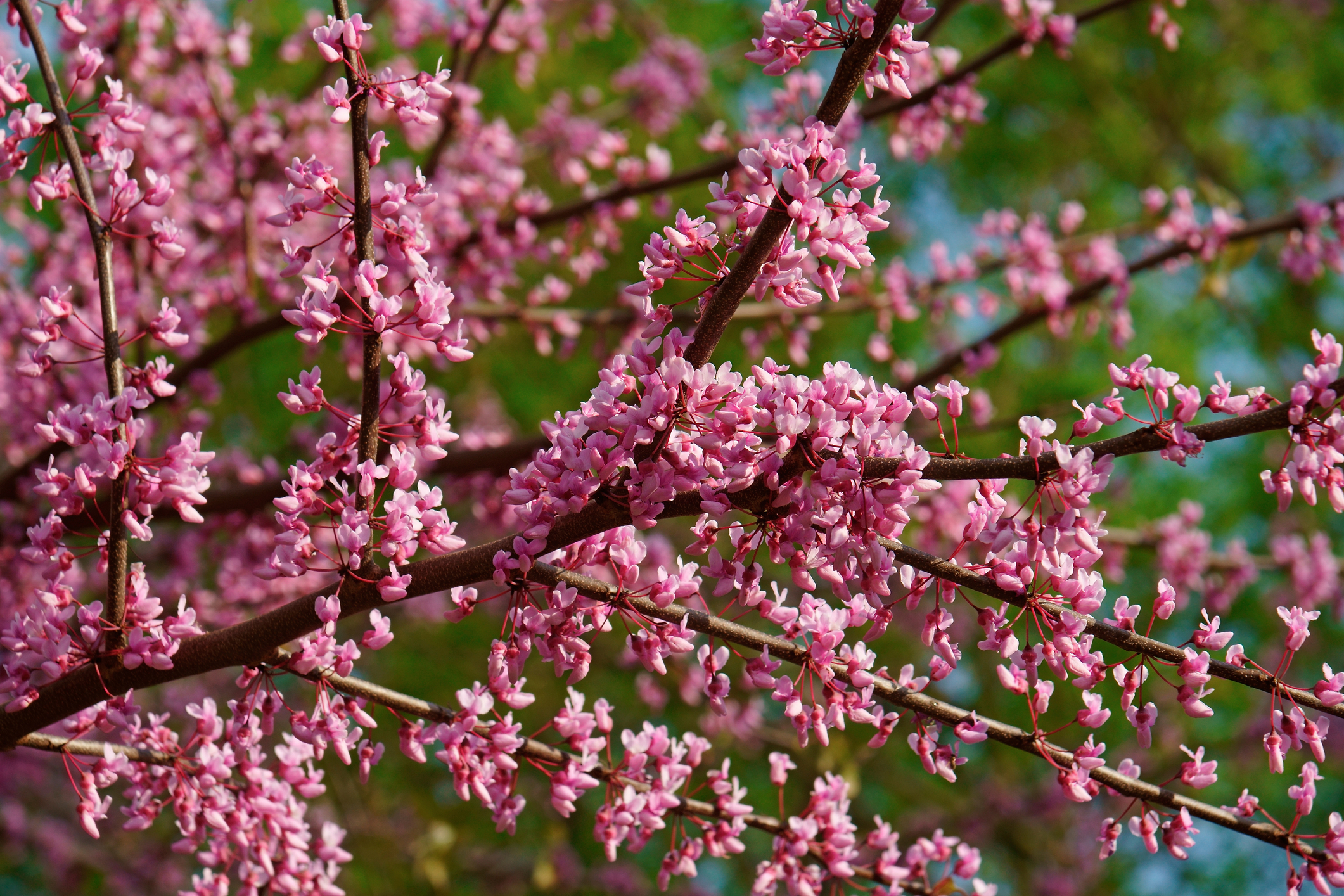A girlfriend and I took a day trip through Jefferson City and then down to Missouri Wildflower Nursery this week. We just happened to hit the weather right – pleasant temperatures, no whipping winds and the bluest sky we’ve seen in ages. What really sang spring to me though, was the profusion of flowering trees in full, and sometimes fragrant, bloom everywhere we went. Seeing all that beauty, you couldn’t help but think, “ Now where could I plant one in my yard?” Which, understandably, leads to the next question, “Which one should I buy?”
 If you take a walk through your local nursery or big box store right now, you’ll find dozens of different varieties of beautiful flowering trees available for sale. While it’s easy to become captivated by the color of a bloom, there’s more to consider before impulsively buying and planting a tree in your yard. The old adage of the right plant in the right place holds true for trees too. So let’s take a look at what to consider before you go tree shopping.
If you take a walk through your local nursery or big box store right now, you’ll find dozens of different varieties of beautiful flowering trees available for sale. While it’s easy to become captivated by the color of a bloom, there’s more to consider before impulsively buying and planting a tree in your yard. The old adage of the right plant in the right place holds true for trees too. So let’s take a look at what to consider before you go tree shopping.
PURPOSE

What is its purpose and where will you get the most enjoyment from your tree? Do you need a bit of shade or is the tree strictly a visual in the landscape? Do you want to be able to sit inside in your favorite chair gazing out a window at a burst of blooms? Do you want to soak in its color and fragrance from your patio or would you rather take it in every time you turn into your driveway? Will it be an accent to the existing landscape or stand alone as a focal point? Do you envision a single tree or eventually a grove of flowering beauties?
APPEARANCE

It’s easy to decide that you want a particular tree because of its bloom color, but there are some other things to keep in mind as you shop. One of the most overlooked factors to consider is how much mess a single tree can make. Trees that produce an abundance of soft fruits are usually attractive to birds, squirrels and other wildlife who really appreciate the free meal, but that same fruit can also become an annoyance on a patio, sidewalk or driveway. Be realistic about what you can easily deal with.
Bloom color is an important consideration, but when a tree blooms is another concern. Here in the Midwest, the earliest blooming trees are a welcome sight after a long, bleak winter, but can also be nipped by unexpected frosts. Later blooming trees add to the rainbow of spring color but with our warming climate many can bloom earlier than anticipated or succumb to early heat waves.
The size and shape of the mature tree is another aspect to consider. Are there overhead power lines that need to be avoided? It’s heartbreaking to see a beloved tree beheaded because it outgrew its allotted space.
Before heading out to buy a tree, spend some time looking at the shape of mature flowering trees in your neighborhood. Are you drawn to a V-shaped crown with gracefully bending branches, or do you prefer a more rounded head? What silhouette will be most pleasing in the winter when branches are bare?
And thinking past the riotous spring color, what does the tree have to offer at other times of the year? Is the summer foliage attractive? Does it add a dash of fall color? Does it add winter interest because of its bark or form?
RESILIENCE

Like other types of plants, not all flowering trees are well suited to every climate zone, and with our ever changing weather patterns, what used to be a common species, may now struggle to survive. To add to the complications, within each climate zone, or even within your own yard, there are microclimates that can determine what will or what won’t thrive. It’s best then, to select species that are proven to flourish not only in your planting zone, but also under the conditions of your intended spot.
Once you’ve decided on where you want your new tree, carefully study the specific environment. The type of light, soil and water are the three most critical elements for tree health and longevity. Will the tree sit in full sun?...morning sun?...just afternoon sun? What is the soil like? Is it heavy clay, unusually sandy or richly organic? Does the ground tend to stay dry, or is it in a lower, wetter spot? Knowing the answer to these questions can help you choose a tree that will thrive instead of struggle.
Traditionally, the vast majority of spring flowering trees have been ornamentals such as flowering crabapples and varieties of magnolias. While these types of trees remain popular, in recent years natives have crept into the landscape. Native flowering trees, because of their hardiness and adaptability to local climate conditions, are becoming popular choices for residential and commercial landscapes.
It would be nearly impossible to list and describe all of the different options available in today’s market. To help with your decision-making, the design experts at Embassy Landscape Group have shared a few of their favorite flowering trees and have reminded us of one to avoid.
FAVORITE ORNAMENTALS
Japanese Snowbell (Styrax japonica)

An elegant tree that presents its fragrant, white blooms in the late spring and early summer after the foliage has fully emerged. The glossy green leaves are attractive all summer, then turn to a burnished golden yellow and orange for fall. Its beauty doesn’t stop there though. As the tree matures, the smooth, gray surface bark exfoliates and reveals a warm orange colored inner bark. A slow grower, the Japanese Snowbell can reach 20 - 30 ft tall.
Kousa Dogwood (Cornus kousa)

The Kousa dogwood prefers a partially shaded environment, but seems to be tolerant of sunny locations and cold temperatures. With a fairly shallow root system, it needs regular moisture during hot summers and appreciates a layer of mulch to help control soil temperatures. It has a vase shape when young, but matures to a more rounded shape. Kousa dogwoods reach about 25 to 30 feet in height. With a fairly shallow root system, it needs regular moisture during hot summers and appreciates a layer of mulch to help control soil temperatures.Bloom time is about two to three weeks after flowering dogwoods.
Yoshino Cherry (Prunus x yedoensis)

For a taste of the Washington D.C. Cherry Blossom Festival, include a Yoshino Cherry in your landscape. One of the more versatile cherries, the Yoshino grows well in just about any soil type from heavy clay to a loamy, moist location. Typically, the Yoshino Cherry has a profusion of white-pink blooms in March and April followed by leaves that emerge as a reddish color and turn glossy green in the summer. Trees do produce 1 inch fruit, but it is usually consumed by wildlife before becoming a problem.
FAVORITE NATIVES
Eastern Redbud (Cercis canadensis)

This is a low maintenance, native tree that can provide valuable structure to a garden. It has profuse pinkish blooms during the spring. This tree can be a multi-trunked tree which adds to the interest and detail of a garden.
Shadblow Serviceberry (Amelanchier canadensis)
This variety of Serviceberry has great white blooms in the spring, edible fruit that both birds and people enjoy and a gorgeous range of red, orange and yellow fall colored leaves. As an added bonus, if you can persuade the birds to share, the fruit can be used to make pies and jams.
Flowering Dogwood (Cornus florida)

With a horizontal branching structure, large while blooms in the spring and vivid red fall color, these native understory trees can’t be surpassed in the landscape.
AVOID
Bradford Pear (Pyrus calleryana)

Because of extremely viable seeds easily spread by birds, this species has become tagged as invasive here in Missouri and in other parts of the country.

